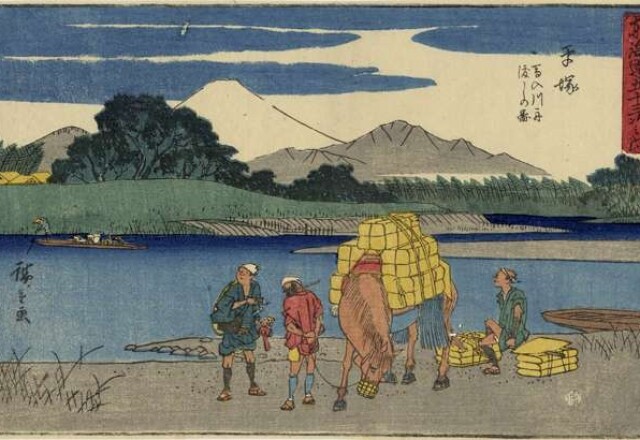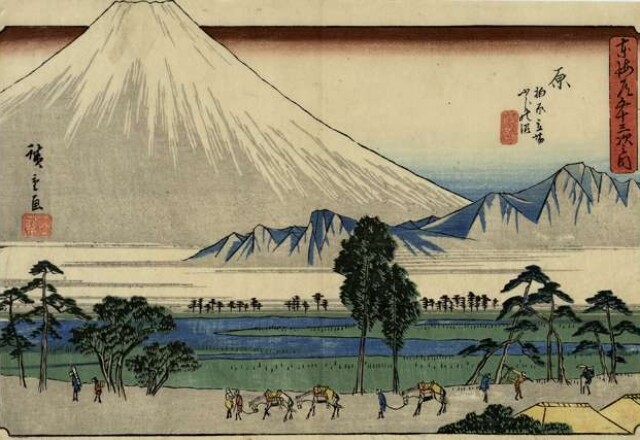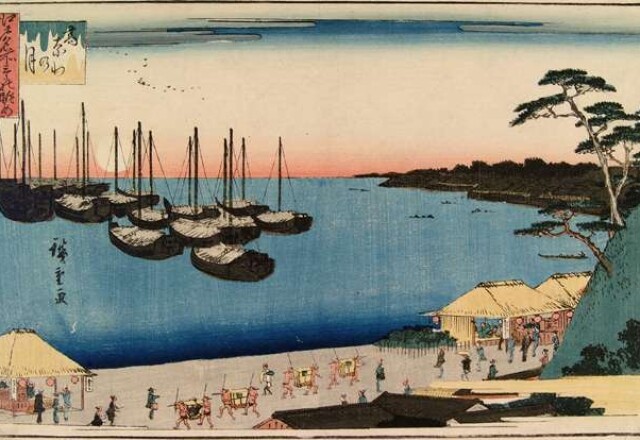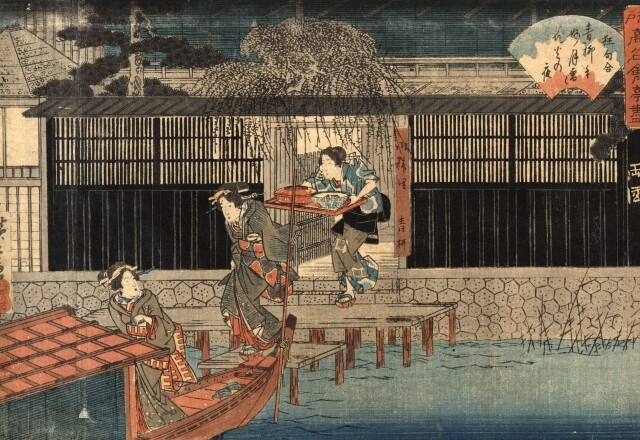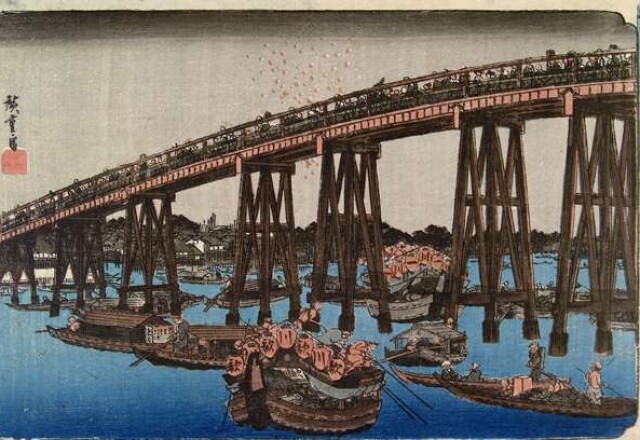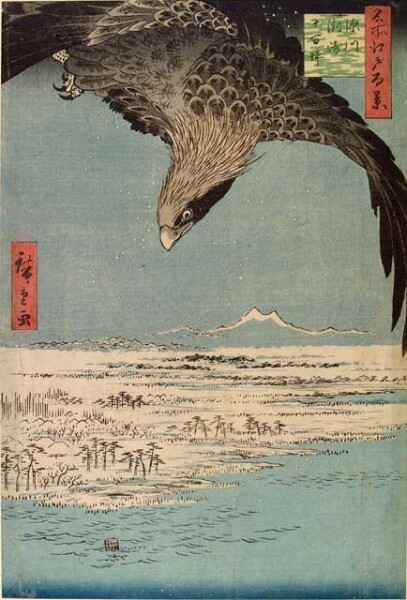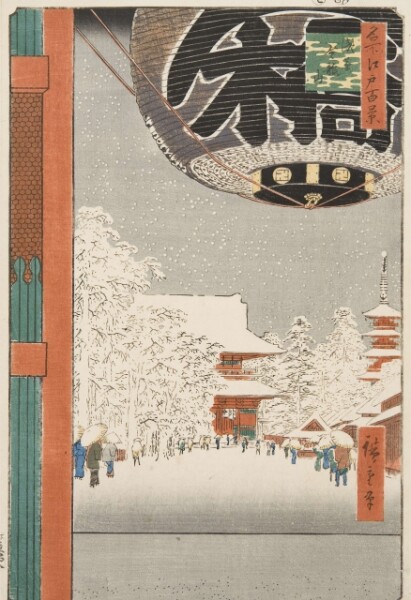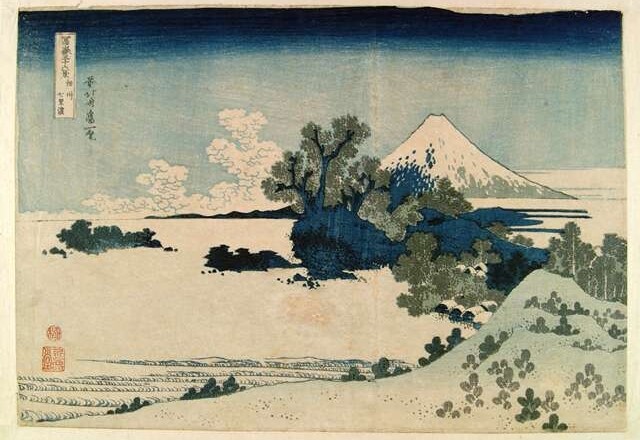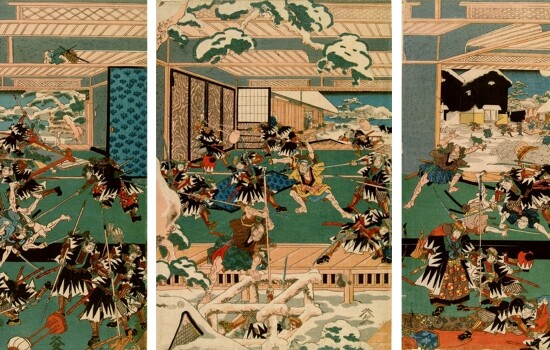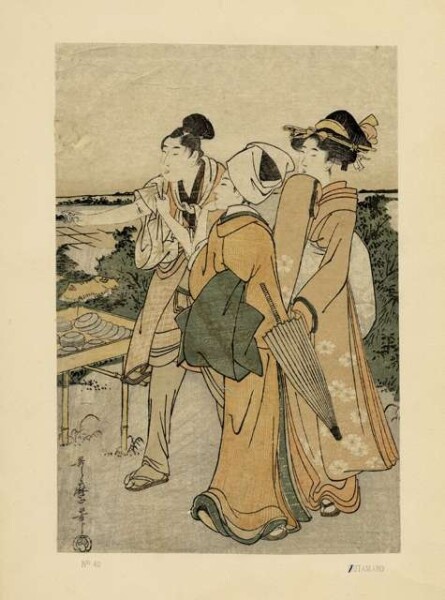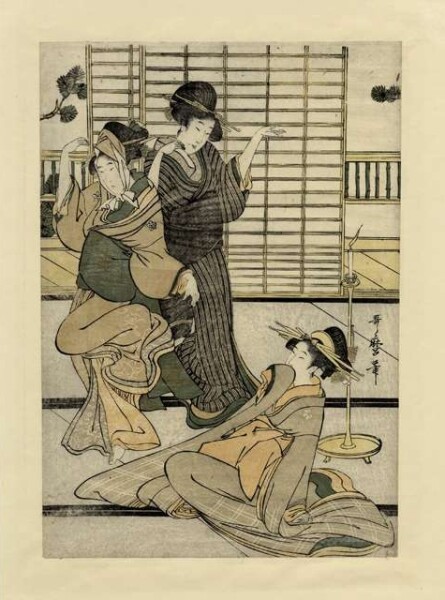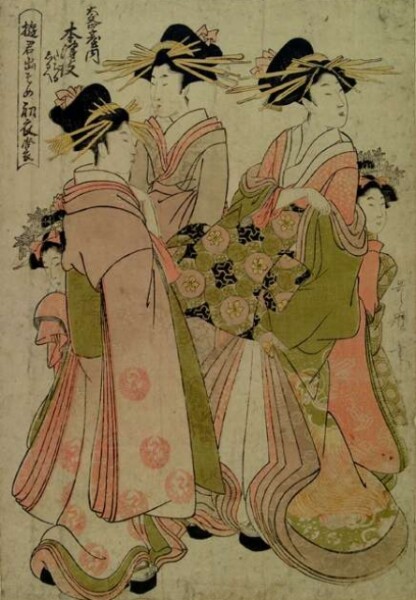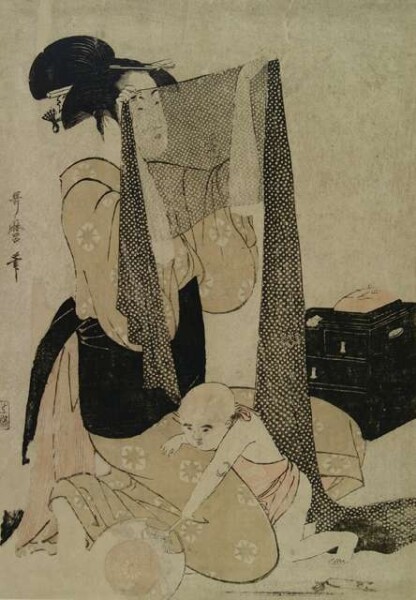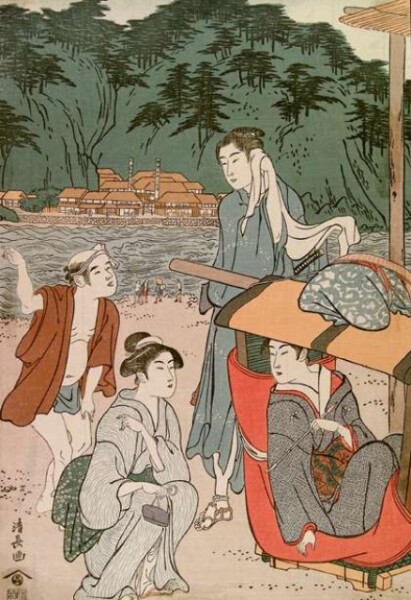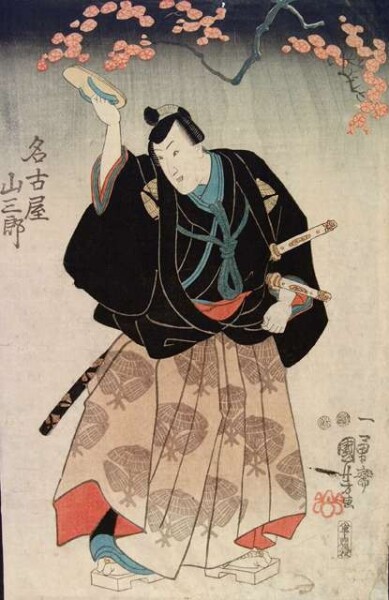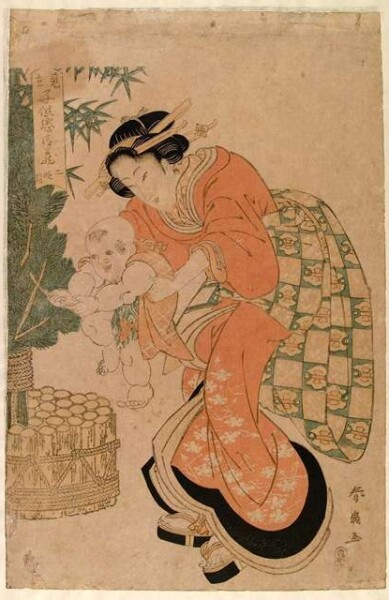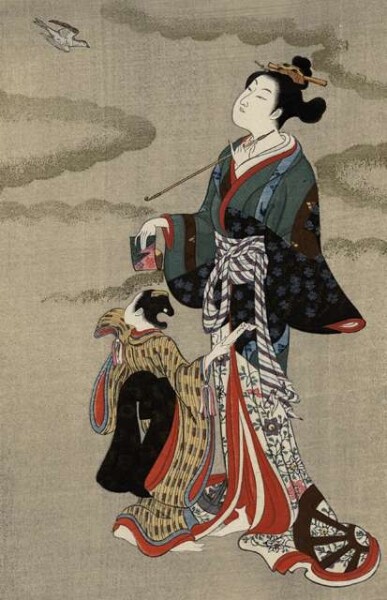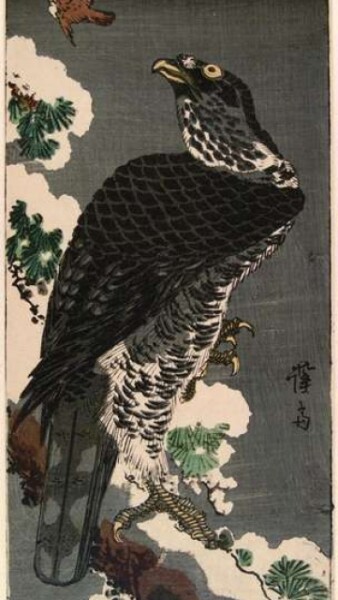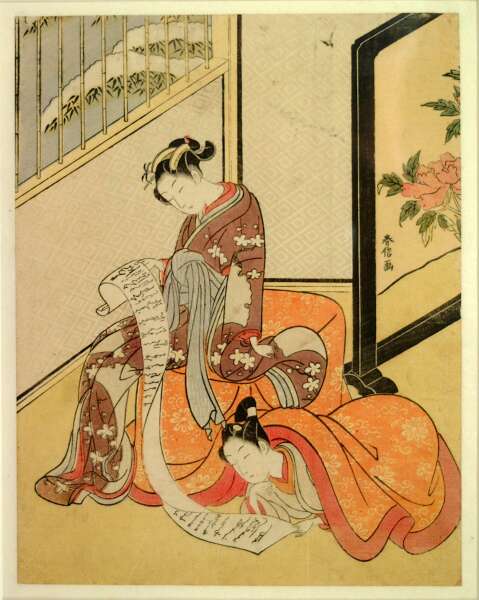JAPANESE WOODBLOCK PRINT HIGHLIGHTS
Woodblock printing was widely adopted in Japan during the Edo period (1603-1868). Most of the prints within our permanent collection fall within this time period. The majority of them are excellent examples of “Ukiyo-e” images, roughly translated as “pictures of the floating world,” referring to scenes of leisure, entertainment, and everyday life in Japan.
While some have been gifted to the museum by generous donors, the bulk of this collection comes from the Mahonri M. Young Estate, partially purchased and partially gifted to the University in 1959. They were likely originally collected by the American Impressionist Julian Alden Weir (1852-1919), who often used them as a resource for study and inspiration for his own art. Mahonri Young married Weir’s daughter Dorothy, and eventually these prints became part of the Young estate.


